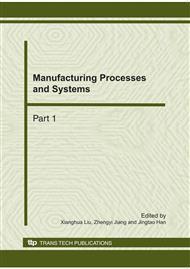p.1112
p.1119
p.1124
p.1129
p.1133
p.1138
p.1144
p.1148
p.1152
Influence of Carbon Nanotubes on the Performances of LiFePO4
Abstract:
To improve the performances of LiFePO4, a positive material in lithium battery, research on the influence of doping amount and doping form of carbon nanotubes (CNTS) on electrical resistivity, specific capacity, specific surface area and particle size distribution of LiFePO4 powder was conducted. The results indicated that, addition of CNTS significantly reduced the electrical resistivity no matter in pure LiFePO4 or LiFe0.98Mg0.02PO4; with same usage, coating of CNTS as carbon source performed better than mechanical grinding and mixing with LiFePO4. With the increase of CNTS content, a rising trend of both specific surface area (BET) and particle size (D50) in LiFePO4 powder was observed, but seeing a slight drop in discharge capacity under the rates of 0.2C and 0.5C. When the content of CNTS reached 3% (by mass) respectively through mechanical mixing and being added as carbon source, electrical resistivity of pure LiFePO4 dropped from over 105Ω•cm to 1868Ω•cm and 27Ω•cm accordingly, and that of LiFe0.98Mg0.02PO4 dropped from over 105Ω•cm to 4800Ω•cm.
Info:
Periodical:
Pages:
1133-1137
Citation:
Online since:
October 2010
Authors:
Keywords:
Price:
Сopyright:
© 2011 Trans Tech Publications Ltd. All Rights Reserved
Share:
Citation:


